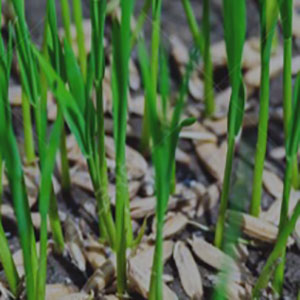Acetic acid disturbs rice germination and post-germination under controlled conditions mimicking green mulching in flooded paddy

Accepted: 19 September 2021
Appendix: 139
HTML: 42
All claims expressed in this article are solely those of the authors and do not necessarily represent those of their affiliated organizations, or those of the publisher, the editors and the reviewers. Any product that may be evaluated in this article or claim that may be made by its manufacturer is not guaranteed or endorsed by the publisher.
Cover crop use in organic rice cropping systems efficiently manages the two most limiting factors in organic agriculture - weed competition and nutrient availability. Nonetheless, cover crop biomasses on soil surfaces under the anaerobic conditions in flooded rice systems produce organic acids (mainly acetic acid) that cause early phytotoxicity to rice seedling coleoptile and roots. This study evaluated the dose-response of acetic acid on germination rates and post-germination growth traits (coleoptile, first leaf, and roots). Under controlled conditions, the seeds of three rice varieties (Sant’Andrea, Salvo, and Selenio) were immersed in acetic acid concentrations (0, 9, 18, 36, 54, and 72 ppm) for eight days. Germination results suggest that acetic acid likely scarred var. Salvo, based on a 15% faster germination rate compared to untreated controls. Across all varieties, increased acetic acid concentrations never slowed germination. During post-germination growth stages, root phytotoxicity was always more evident than shoot phytotoxicity, although the responses varied among the varieties. Root length damage appeared first at acetic acid concentrations of 36 ppm in var. Sant’Andrea and Selenio, and at 54 ppm in var. Salvo. Root length measurements provided explicit and speedy information on varietal tolerance to acetic acid and, consequently to cover crop fermentation and suggested that direct observation of root damage in paddy fields is valuable for prompt water management decisions, such as flooding interruption. Further development of this method may lead to more complete varietal screening and identification of related genetic traits responsible for tolerance.
Highlights
- Based on genotype, increasing acetic acid levels in flooding waters can speed rice germination.
- Roots are more sensitive than shoots to acetic acid phytotoxicity during very early germination.
- Early root length impairments provide information on tolerance to acetic acid phytotoxicity.
- A slower germination rate may induce higher tolerance to green mulching.
How to Cite

This work is licensed under a Creative Commons Attribution-NonCommercial 4.0 International License.
PAGEPress has chosen to apply the Creative Commons Attribution NonCommercial 4.0 International License (CC BY-NC 4.0) to all manuscripts to be published.

 https://doi.org/10.4081/ija.2022.1926
https://doi.org/10.4081/ija.2022.1926







